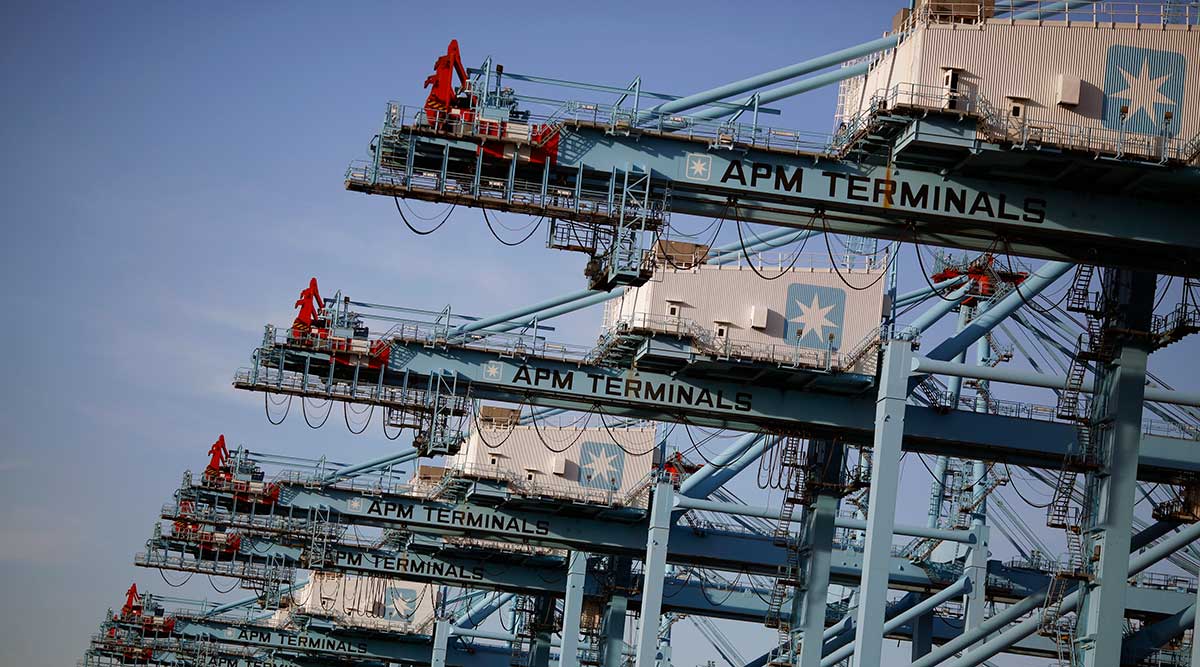April a Strong Month for West and East Coast Ports

The top North American ports had another strong month in April as larger vessels begin to arrive and drop off more containers in a single stop than ever before.
The Georgia Ports Authority processed 333,006 industry-standard 20-foot-equivalent units, or TEUs, a 12% increase compared with April 2016. The total number of imports, both loaded and empty, rose 12% to 163,092 and exports improved 11% to 169,914.
The Port of Savannah ranks No. 4 in North America based on annual container volume.
“Savannah has established itself as a premier gateway serving the Eastern United States,” said Griff Lynch, GPA’s executive director. “Our team is not only keeping pace with record volumes, but has managed to set new industry standards in cargo velocity, berth productivity and congestion free gates.”
Through the first four months, dockworkers have transported 1.3 million TEUs, up 10% from 2016. The port has recorded year-over-year gains and processed more than 300,000 TEUs each month so far in 2017.
The Northwest Seaport Alliance, which consists of Seattle and Tacoma, Washington and ranks No. 5 in North America, posted a 0.5% gain in container traffic to 282,775 TEUs versus 2016 levels. However, international-based business increased 8% to 226,955 while traffic with Alaska and Hawaii dropped double-digits. International imports rose 1.3% to 117,950 and exports jumped 16% to 109,005.
Through April, container traffic has increased 7.6% to 1.2 million.
The Port of Virginia, No. 7, moved 225,196 TEUs in April, which is 4.6% higher than the same month last year. Imported containers grew 7.9% to 104,646 and exports improved 1.9% to 120,550. The Virginia Port Authority has handled at least 220,000 each month since October 2016.
“Our volumes remain steady, and we are on track to surpass the number of TEUs we handled in fiscal year 2016; through April we are up nearly 7%,” said John Reinhart, CEO of the Virginia Port Authority. “The new alliance networks went live April 1, and Virginia is the top East Coast port for deployed capacity for Asia-U.S. East Coast alliance services. The big ships are coming to Virginia and bringing corresponding amounts of cargo — and we are on the edge of peak season. Those realities, coupled with our expansion projects, are resulting in a very active spring at The Port of Virginia.”
The port authority is in the middle of a multiyear project to expand capacity at the Virginia International Gateway and Norfolk International Terminal facilities.
The Port of Oakland, No. 9, reported a 4.2% year-over-year increase in container traffic to 196,247 TEUs in April. Loaded imports grew 3.7% to 74,957, but exports fell 1% to 77,798.
Through April, container volume was up 2.8% compared with last year, even though there was a 5.6% drop in the number of vessels at the port.
Port officials said that larger vessels carrying more cargo have arrived this year than in the past. They added that the average-size vessel visiting Oakland can carry more than 8,000 20-foot containers versus 5,000 just years ago. Ships with capacity for 14,000 containers — the largest in North America — make weekly stops in Oakland weekly, the port said.
“Shipping lines have moved to larger vessels to consolidate cargo and cut costs,” Port of Oakland Maritime Director John Driscoll said. “We’re the beneficiaries because we can handle volume growth efficiently and sustainably.”
In Charleston, S.C., No. 11, container traffic grew 20% year-over-year to 189,315 TEUs. Loaded imports rose 21% to 82,897 and exports increased 8.7% to 66,911.
The South Carolina Ports Authority also announced railroad traffic to the Inland Port Greer terminal was the strongest April on record, with 11,125 rail moves last month.
“A record-breaking April in our container business segment as well as at Inland Port Greer is great news for the Port,” said Jim Newsome, CEO of the South Carolina Ports Authority. “Our growth is broad-based with a good import-export balance, and while we expect to see container trade growth moderate over the foreseeable future, the port is well-positioned to surpass our volume goals this fiscal year.”
Through April, container traffic was up double-digit percentages across the board. Imports were up 15% to 320,987 and exports were up 13% to 270,421. When empty containers were added, total container traffic has grown 18% to 742,563 versus 2016 levels.
Similar to Oakland, ports in Charleston, Savannah and Virginia should benefit from the decision of the Cosco Shipping Co. to begin weekly Neopanamax service from Asia through the Panama Canal. Once the old Bayonne Bridge deck is removed in New Jersey in June, the 10,000- to 13,000-TEU vessels will bring more containers to the East Coast than ever before.
The Cosco Development, which visited the three ports during the week of May 8, was the first such vessel to arrive.

